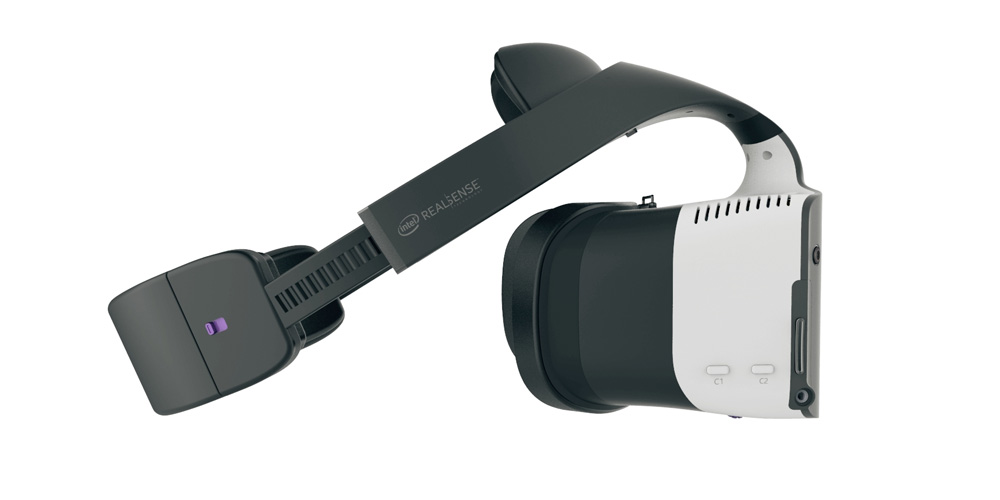The PokemonGo phenomenon is a strange one. Whenever I see people playing the game, they appear to me like zombies: heads down, staring blankly at their handheld device, at times completely unaware of their surroundings, a slight shuffle in their gait and being led who knows where by images on a screen less real than the dream they had the night before--a strange phenomenon indeed. People claim they are getting outside more. Yes, and that's a good thing; however, one's experience is mediated through the handheld screen which undermines its reality. What would it be like to apprehend what is around without technology dreaming up all kinds of monsters lurking chimerically behind every bush? Ah but reality isn't fun without it . . .
I've written in previous posts about virtual reality: it's use in medicine to block pain, and some of the problems with using it. Virtual Reality is going to become ubiquitous--most people who follow technological trends know this. In a recent announcement, Intel and Microsoft have partnered up to put some serious money and R&D to work to speed up this ubiquity. According to MIT Tech Review,
"Intel and Microsoft announced Tuesday that they are working together to help computer manufacturers get into the business of making stand-alone VR headsets."
The key here is that they will be teaming up to "help computer manufactures get into the business" of VR. Intel has developed a VR headset that is a stand-alone device that doesn't need to be tethered to a PC. And it plans to take the design specs of the headset open-source so other computer companies can create their own headsets, according to the CEO of Intel Brian Krzanich.
 |
| Intel's Project Alloy headset |
Without a cord, and 3D mapping technology, this headset is sure to augment your experience of 'reality'. And with Intel's and Microsoft's vision for ubiquity, this new headset is just another iteration of Virtual Reality technology that is going to advance rapidly and exponentially over the coming years.
But why does Intel want VR to be ubiquitous? What is the point of mass VR? Why is developing this technology so important beyond being able to watch movies in a more vivid way?
CNET: Intel's Project Alloy Cuts the Cord
The reason is that VR is a critical technology for futurists. According to Ray Kurzweil, with the exponential growth of nanotechnology, and its use for biological enhancement, humans will be living longer and longer each year to, eventually, living forever. The problem with this is, according to Kurzweil, boredom--there just won't be enough to do when we live forever. We just won't know what to do with eternity . . .
So, according to him and other futurist thought-leaders, we'll need Virtual Reality to keep life exciting; for VR will allow us to do anything we dream possible--not of course with our 'real' bodies--whatever that will mean--but through augmenting our reality. Kurzweil calls this "radical life expansion," meaning expanding what you can do in life.
Ray Kurzweil on the Next Phase of Virtual Reality
What I take from Kurzweil is that, like PokemonGo, reality isn't good enough--we need it to be somehow 'virtual', 'augmented'. Living life without the augmentation of technology would mean, using Kurzweil's logic, radical life restriction. And this further means that living life in our bodies, in our unmediated minds, is a restricted life, a "boring" life, a life of drudgery that only the creations of our hands can adequately mitigate. For Kurzweil and others, life itself isn't good enough--our experiences of it must be augmented. And if our bodies can achieve the things we dream of doing, then we'll just make our dreams reality--virtual reality.
But this isn't all. According to Kurzweil and others, VR headsets will quickly become obsolete, replaced by a connection right into your brain through nanobots that will deliver reality directly to your neocortex.
To get to this point, technology will have to go through iterations of development--thousands upon thousands of iterations. And therefore, to keep this utopian vision going, there need to be countless researchers and companies and money driving it. And this, I maintain, is part of Intel's larger vision and the reason why it is taking its headset open source, and, along with Microsoft, driving the next wave of VR. The hope is to rapidly advance this technology so it is ready for the emergence of immortal humanity.
The question remains, why is reality not good enough--i.e., unmitigated, unmediated reality. Why do we seek to escape the really real of experience for the mediated-real, the 'virtually' real? It's a much broader but important question. Are we not living in a time in which more so than perhaps the last 50 years we need to be more present to what's going on around us, rather than distracted by virtual reality experiences? I've written about the use of VR to mitigate and manage pain. Think about a world in which there is upheaval--but with a great escape: VR. In the midst of trouble, of turmoil, you can block out the really-real world and live in a dream-world; a world of your fantasy--only it will seem real!



No comments:
Post a Comment